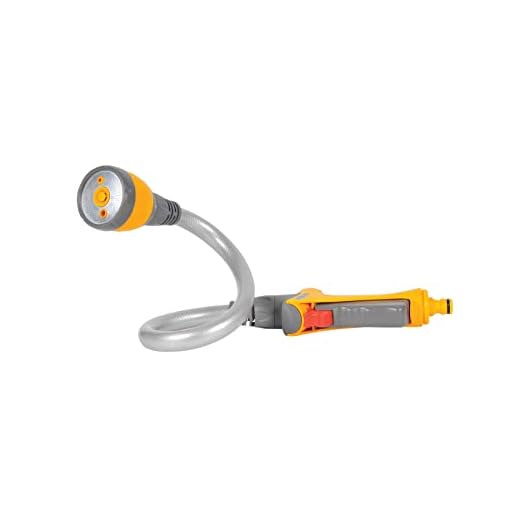



Utilising a standard garden hose for high-pressure cleaning can be achieved with the right fittings and attachments. A hose end sprayer, combined with a nozzle designed for increased pressure, provides a reasonable alternative to traditional cleaning machines. This setup can handle a variety of tasks, from washing vehicles to cleaning patios.
To start, ensure that the hose has the appropriate flow rate. Generally, a standard garden hose can deliver around 2.5 gallons per minute (GPM) with a pressure of about 40-60 psi. This can be improved significantly with a high-pressure nozzle, which can concentrate the flow and increase the effective pressure at the nozzle tip, making cleaning tasks more manageable.
Invest in a pistol grip or adjustable nozzle sprayer that can vary the spray pattern and pressure. Products like turbo nozzles can amplify the power of the spray by creating a rotating jet. Coupling the right accessories transforms a simple hose into a powerful cleaning companion.
Be mindful of the water source; any leaks in the hose can reduce performance. In addition, maintaining the hose in good condition is crucial–check for kinks, cracks, or blockages that could hinder water flow. Regular maintenance adds longevity to the equipment and optimises performance.
This approach not only saves money but also repurposes existing tools. While it may not reach the extreme pressures of dedicated machines, it offers a practical and efficient solution for outdoor cleaning tasks.
Transforming a Garden Supply into High-Pressure Cleaning Tool
Utilising a standard garden supply to achieve similar performance as a dedicated cleaning device is feasible with the right attachments and modifications. A nozzle with adjustable settings is crucial; opt for one that narrows the water flow to increase velocity. This change creates a powerful jet that significantly enhances cleaning capabilities.
Recommended Accessories
Using a turbo nozzle can be especially beneficial. These nozzles have rotating jets, which maximise the cleaning impact on surfaces. Combining a stiff bristle brush attachment with the adaptable nozzle can further elevate the efficacy for challenging grime removal. Always ensure that accessories are compatible with the supply you are using, as incorrect fittings can lead to leaks or inadequate pressure.
Enhancing Water Flow
Installing a pump booster can dramatically improve water pressure. These devices work by increasing the psi (pounds per square inch) and ensuring a steady flow, ideal for tasks like driveway cleaning or exterior sanitising. Proper maintenance of all components is vital; check for clogs or wear regularly to maintain optimal performance.
Always follow safety guidelines, wear appropriate gear, and test the setup on a small surface before tackling larger areas. Adjustments based on surface type and dirt level will yield the best results.
Understanding Pressure Washer Mechanics
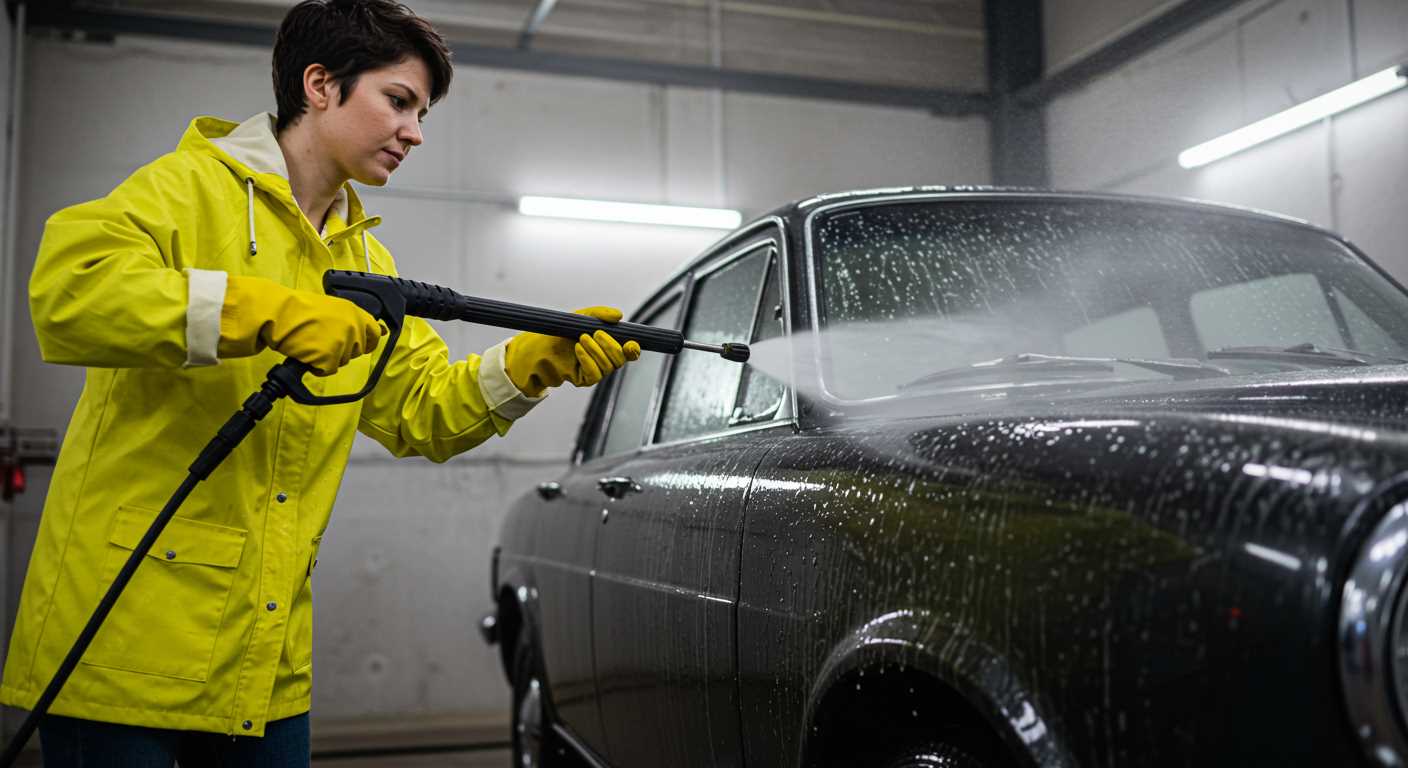
To grasp the science behind these cleaning machines, it’s crucial to know how they function. The core of any effective cleaning device is the combination of high water pressure and controlled flow rate. This synergy allows for the efficient removal of dirt, grime, and stains from various surfaces.
At the heart lies a motor, which can be electric or gas-powered. The motor’s primary purpose is to drive a pump, significantly increasing the water pressure. Usually, pressures range from 1000 to over 4000 PSI depending on the model, influencing the level of cleaning power available.
Pumps are of various types; axial cam and triplex are the most common. Axial cam pumps are typically found in lower-end models, ideal for lighter tasks. In contrast, triplex pumps are more robust, often seen in commercial-grade equipment, providing durability and efficiency for intensive jobs.
Water enters through an inlet, travelling through a filter that safeguards the pump from debris. Once inside, the pump elevates pressure and forces water out via a nozzle. The nozzle is pivotal as it dictates spray pattern and intensity; adjustments allow for varying cleaning applications, from wide sprays for delicate surfaces to concentrated jets for tough stains.
Furthermore, detergent injection systems play a role in enhancing cleaning effectiveness. By integrating cleaning solutions into the water stream, stubborn dirt becomes easier to remove. These systems may operate through siphoning or downstream injection methods, offering versatility based on cleaning needs.
Understanding these components provides insight into the performance of various models and helps make informed choices for specific cleaning applications, be it household tasks or more demanding professional cleaning. For the best results, always choose a model that aligns with the intended use, ensuring efficiency and satisfaction with the outcome.
Necessary Attachments for Conversion
To achieve optimal results when transforming a garden watering apparatus into a high-pressure cleaning solution, several attachments are required. Each component plays a vital role in enhancing the performance and efficiency of the setup.
Recommended Attachments
- High-Pressure Nozzle: A nozzle with adjustable or multiple spray patterns allows for versatility, enabling the user to switch between a concentrated stream and a wider spray easily.
- Foam Cannon: This attachment applies a thick layer of cleaning foam to surfaces, making it easier to break down dirt and grime before using the high-pressure flow.
- Connector Adapters: Depending on the size and type of garden pipe, various connectors may be necessary to ensure a tight fit that prevents leaks during operation.
- Extension Wand: An extendable wand reaches inaccessible areas, such as higher windows or deep crevices, without the need for ladders.
Additional Considerations
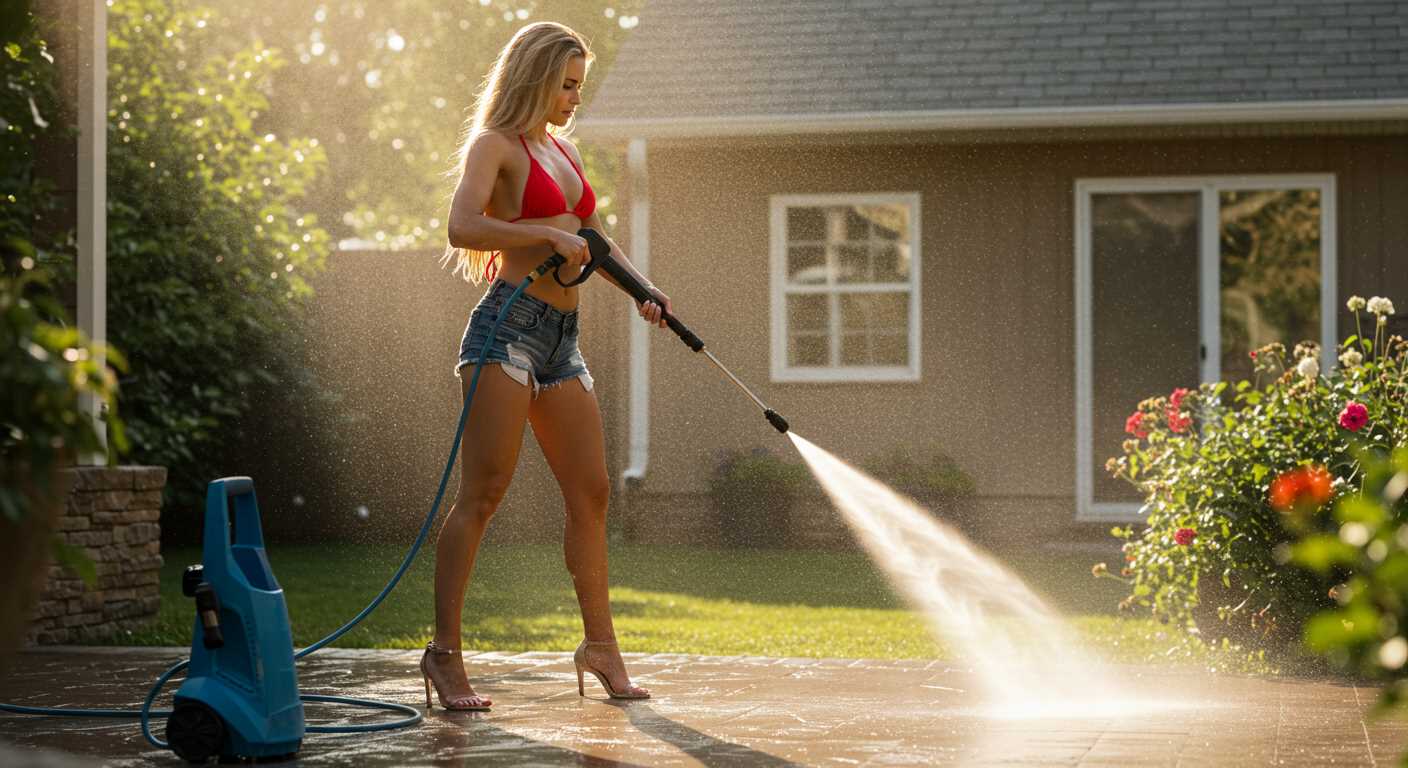
- Pressure Regulator: Incorporating a regulator helps in controlling the flow rate and pressure to protect the surface being cleaned from potential damage.
- Replacement Filters: A filter prevents debris from entering the system, ensuring longevity and consistent performance of all components.
- Quick Connect Fittings: These allow for fast and easy attachment and detachment of nozzles and wands, streamlining the cleaning process.
Equipping the setup with these attachments not only maximises the potential of the conversion but also enhances the ease of use and effectiveness in tackling various cleaning tasks. Each component contributes to a well-rounded approach to home maintenance and improvement.
Steps to Modify Your Hose Setup
Start with a sturdy garden pipe, ensuring it is in good condition without leaks. Examine your existing fittings for compatibility with desired attachments.
1. Gather Required Tools and Components
Collect the following items for the conversion:
- A universal adapter to connect various attachments.
- A high-pressure nozzle that can create a focused spray.
- A connector for a compatible cleaning agent injector.
2. Assemble the Components
Begin by securely attaching the adapter to the end of the garden pipe. Use pliers for a snug fit to prevent leaks during operation.
Next, fasten the high-pressure nozzle to the adapter. Make sure it is firmly connected for optimal performance.
If the goal includes using cleaning agents, attach the injector prior to the nozzle. Follow manufacturer instructions for proper installation.
3. Adjust Water Pressure
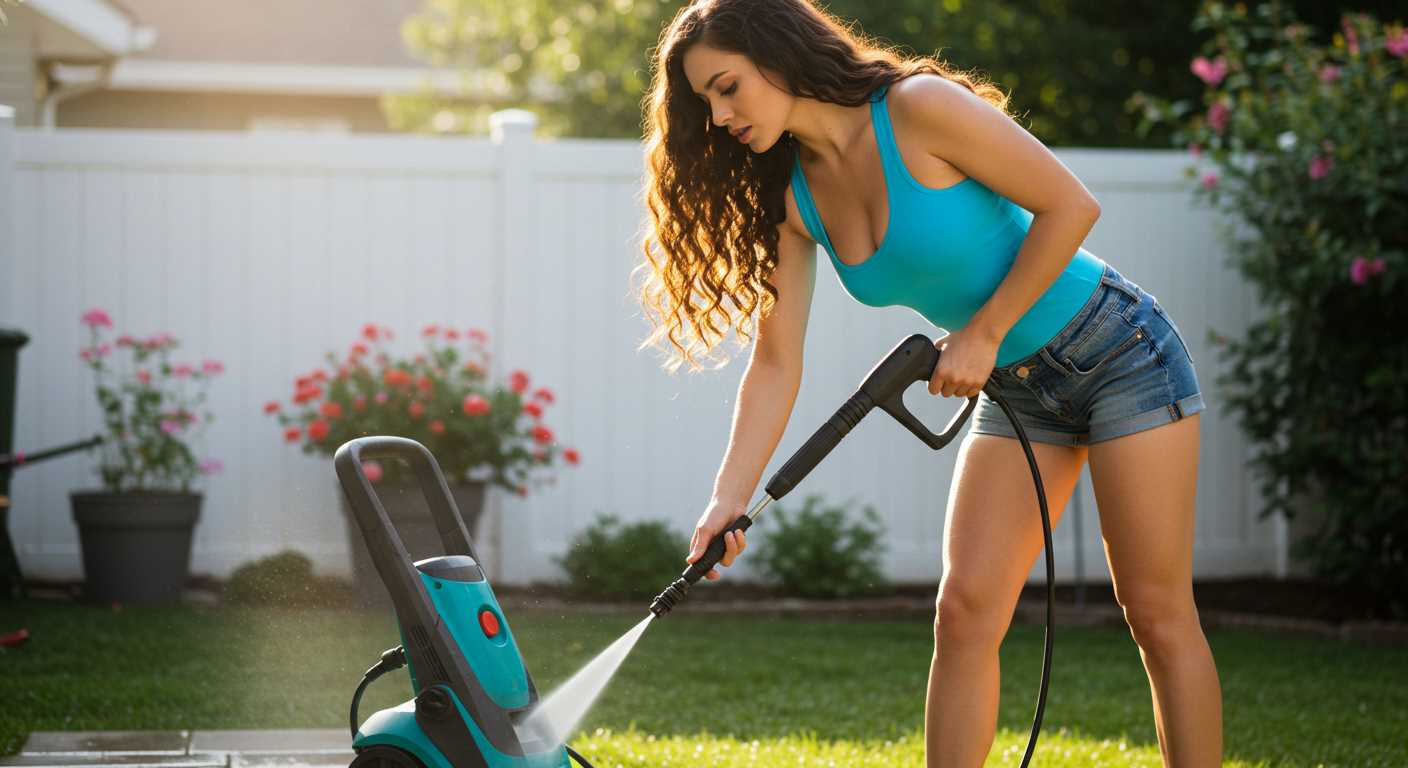
Monitor the tap valve to regulate water pressure. A moderate flow is preferable to achieve an efficient spray without damaging the surface being cleaned.
| Attachment Type | Purpose |
|---|---|
| Universal Adapter | Connects various nozzle types. |
| High-pressure Nozzle | Delivers concentrated spray for efficient cleaning. |
| Cleaning Agent Injector | Facilitates the use of detergents for enhanced cleaning. |
Test the setup before full use. Check for leaks, ensure all components are secure, and adjust as necessary to achieve the desired effect. For enhanced results, consider incorporating turbo nozzles or rotating brushes for specific cleaning tasks.
Choosing the Right Nozzle for Your Needs

Selecting the correct nozzle is pivotal for achieving optimal results in your cleaning tasks. Each type offers distinct advantages tailored to various surfaces and cleaning requirements.
- Adjustable Nozzles: These versatile attachments allow quick changes in spray patterns. Ideal for users who require flexibility during cleaning sessions, enabling a range from a narrow jet for stubborn stains to a wide fan for rinsing larger areas.
- Turbo (Rotary) Nozzles: Perfect for tackling tough grime on concrete or brick surfaces. These nozzles rotate the spray in a circular motion, enhancing the cleaning power significantly compared to standard nozzles.
- Soap Nozzles: Specifically designed for applying cleaning detergents. They typically feature a wider angle, promoting even distribution of soap solutions across surfaces, which assists in breaking down tough residues.
- Fan Nozzles: Available in various degrees (usually 0°, 15°, 25°, and 40°), these nozzles allow you to choose spray intensity based on the task. A 0° nozzle delivers a concentrated blast for rigorous cleaning, while a 40° is suitable for delicate surfaces.
Consider factors such as surface material, type of dirt, and the desired cleaning speed when making your selection. A good practice is to have a variety of nozzles on hand, as this provides the adaptability needed for different jobs.
Testing each nozzle on a small, inconspicuous area beforehand ensures that the chosen attachment does not damage the surface during usage.
Safety Precautions When Using a Modified Hose
Ensure proper personal protective equipment (PPE) is worn, including safety goggles, gloves, and non-slip footwear. This will safeguard against the high force of water spray and potential debris. A face shield can add an extra layer of protection for your eyes and face.
Always inspect equipment before each use. Check for leaks, wear, and damage in hoses and connectors. Ensure that any modifications are secure and that no parts are compromised. A damaged connection can lead to bursts under pressure, posing significant risks.
Maintain Ground Stability
Always operate on stable, level ground. This helps prevent slip hazards caused by slick surfaces. Be cautious of the positioning of electrical cords and other hazards in the vicinity to avoid tripping. If using a ladder, ensure it is sturdy and on a flat surface to prevent falls.
Control Water Flow

Install a shut-off valve for immediate control over water flow. If unintended pressure issues arise, being able to stop the flow swiftly can mitigate injuries. Additionally, avoid directing the water towards electrical outlets, appliances, or sensitive surfaces that could be damaged.
During operation, maintain a safe distance from others to prevent injury from spray back or debris. If using accessories that generate foam or chemicals, follow manufacturer instructions to avoid skin contact and respiratory issues.
Regular maintenance of equipment after each use extends its lifespan and ensures reliable performance. Clean any attachments and store them securely to prevent accidents. Always consult product manuals for specific safety recommendations related to the materials and configurations used.
Incorporating these precautions greatly enhances safety, ensuring a more enjoyable and efficient experience with the modified setup. Prioritising safety cannot be overstated; it is foundational for effective and secure cleaning practices.
Common Issues and Troubleshooting Tips
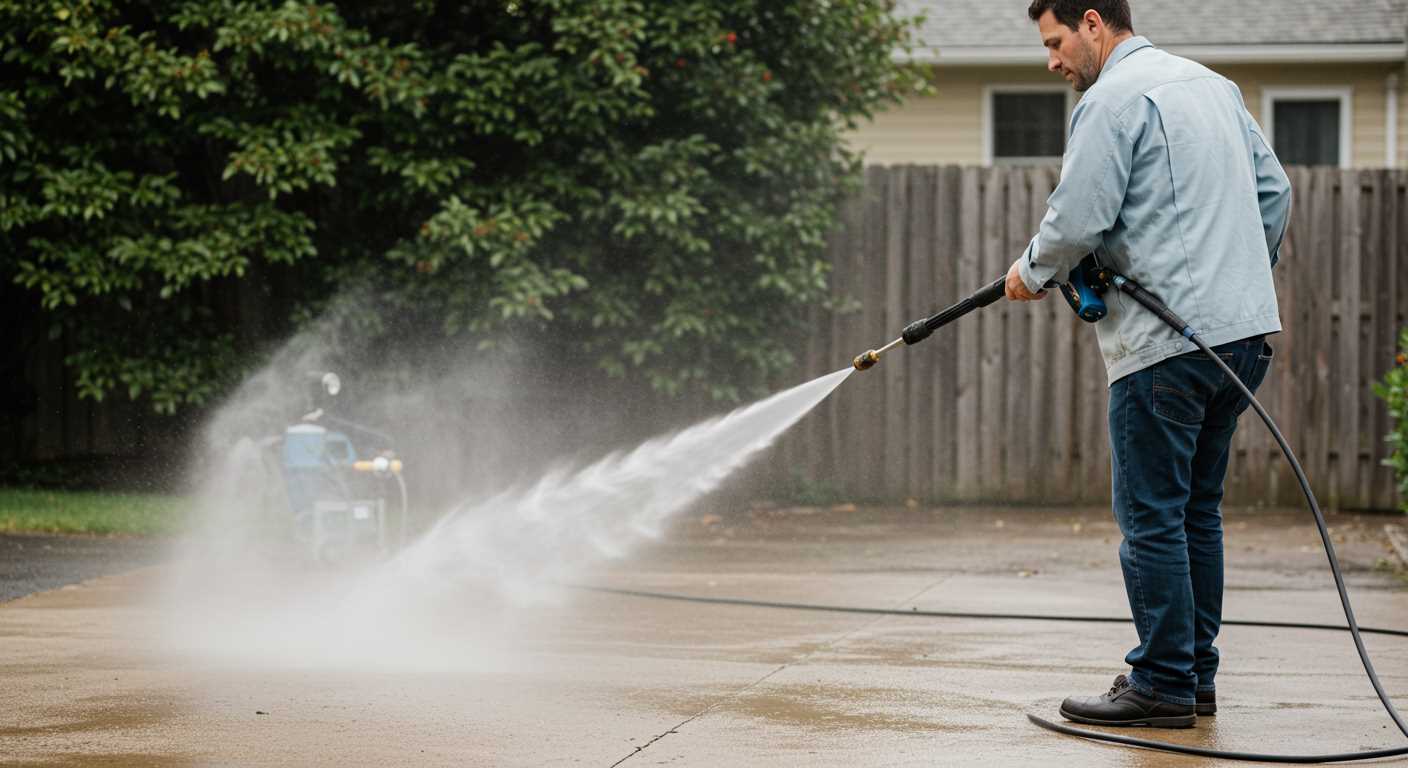
Insufficient water flow often leads to decreased performance. Check for kinks in the tubing or blockages in the nozzle. Ensuring a clear path for water is essential for optimal functioning.
If experiencing fluctuating spray pressure, inspect the attachment points for leaks. A tight seal is necessary to maintain consistent flow and pressure. Tighten connections where needed, and replace worn seals.
Noise and Vibration Concerns
Excessive noise or vibrations might indicate an issue with the improvised conversion components. Ensure all attachments are securely fastened and consult product manuals for specific tolerances of adapters and nozzles.
Clogged Nozzles
A clogged nozzle can significantly hinder effectiveness. Regularly check and clean the nozzle to prevent debris build-up. Using a pin or needle can help remove stubborn blockages, ensuring uninterrupted water stream.
Maintaining Your DIY Pressure Washer Setup
Regular maintenance ensures longevity and optimal performance of your modified cleaning tool. Begin with checking for leaks in attachments and hoses. Inspect each connection to confirm a tight seal, using Teflon tape on threads if necessary to prevent water loss.
Clean or replace filters and screens often, as debris can restrict water flow and diminish pressure. Regularly rinse out the nozzle to remove any blockages that may affect spray patterns. A blocked nozzle can lead to unwanted pressure buildup that could damage connections.
It’s advisable to store the modified system in a dry and cool location to prevent corrosion. If using an electric pump, ensure that it’s stored indoors or covered to avoid moisture exposure. This guards against rust and electrical issues.
If your setup incorporates an electric power source, routinely inspect the electrical connections for signs of wear or fraying. Address these immediately to avoid potential electrical hazards.
Test your equipment periodically, running it without load to monitor performance. Listen for unusual sounds that may indicate pump issues. Should performance drop, troubleshoot by checking for clogs or worn components.
Consider routine servicing after heavy use or annually, focusing on key components like the motor, pump, and any frequently used accessories. Document your maintenance activities to track any recurring issues and their resolutions.
Using appropriate cleaning solutions can also prolong the integrity of the components. Opt for products specifically formulated for the material of your equipment to avoid damaging seals and hoses. Avoid bleach or harsh chemicals that may degrade plastic and rubber parts.
Lastly, always refer to the instructions provided by manufacturers for specific maintenance tips relevant to your components. Maintaining meticulous attention to care will keep the setup operational and extend its life for countless tasks ahead.
Alternatives to Consider for High-Pressure Washing
For those seeking high-pressure cleaning solutions without fully committing to a machine, several alternatives may suit specific needs. One effective method involves using a dedicated garden sprayer, which can offer significant cleaning power, especially for smaller tasks. Look for models with adjustable nozzles to adapt the spray pattern, allowing greater versatility for various surfaces.
Another viable option is an electric or gas-powered power scrubber. These devices provide intense cleaning capabilities and usually come with multiple attachments for different applications, such as driveway cleaning or car washing. Power scrubbers can handle tougher grime that a simple nozzle setup may struggle with.
If aiming for sustainability and efficiency, consider a foam cannon. This accessory attaches to a standard pressure hose, enabling thick foam application for pre-soaking surfaces before scrubbing. It’s particularly effective for car cleaning and may enhance detergent performance, leading to better results even with less water pressure.
Lastly, employing a steam cleaner can yield impressive results on a variety of surfaces, from patios to kitchen floors. The high temperature and pressure of steam effectively dislodge dirt and grime while sanitising as it cleans. Steam cleaners are especially beneficial for indoor applications, where chemical usage should be minimised.
FAQ:
Can I really convert my garden hose into a pressure washer?
Yes, you can convert your garden hose into a pressure washer with the right attachments. There are various products available on the market designed specifically for this purpose. Normally, these attachments include a nozzle that increases the water pressure and a connector to fit your hose. However, the performance may not match that of a traditional pressure washer, but it can still be useful for light cleaning tasks around your home.
What do I need to turn my hose into a pressure washer?
To turn your hose into a pressure washer, you typically need a high-pressure nozzle or an attachment kit that connects to your garden hose. Some kits may also include a lance or wand for better reach. An optional foam cannon can add detergent for enhanced cleaning. Make sure you check the compatibility with your hose and follow the manufacturer’s instructions for assembly and usage.
How does the pressure from a hose attachment compare to a standard pressure washer?
The pressure generated by a hose attachment is usually much lower than that of a standard pressure washer. While a pressure washer can produce anywhere from 1000 to 4000 PSI (pounds per square inch), hose attachments typically operate at around 10-70 PSI. This means that while hose attachments can improve cleaning efficiency, they are generally not suited for heavy-duty tasks, such as removing old paint or tackling deeply ingrained dirt.
Are there any risks associated with using a hose as a pressure washer?
Yes, there are some risks involved. Using a hose attachment can potentially damage delicate surfaces if the pressure is too high. Furthermore, if the attachment is not secured properly, it may come loose during use, leading to water spraying unexpectedly. Always ensure your hose and attachments are in good condition, and avoid using them on surfaces that cannot withstand increased water pressure.


